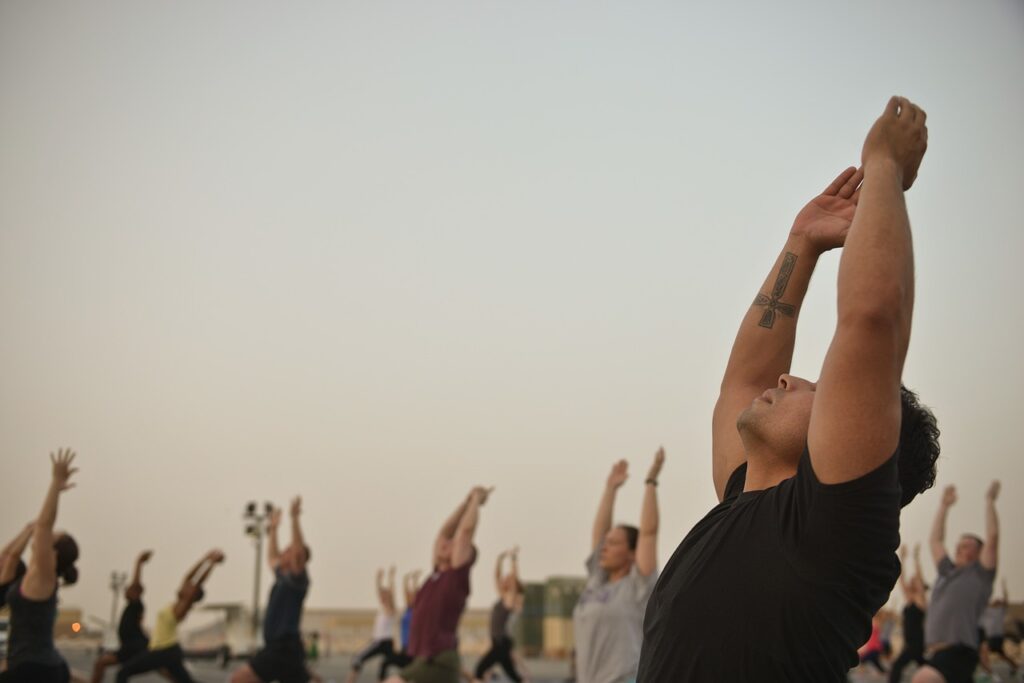In modern society we are faced with stress on a daily basis, this can have a multifold negative affect on our health. Reports of reduced fertility and other sexual disease are on the rise. Evidence points to stress as a major factor in creating these dysfunctions. Yoga shows some promise as a lifestyle change that may help promote healthy reproduction in both men and women.
Infertility is often treated medically through interventions such as IVF (in vitro fertilization). This is a costly and time consuming process which can further increase stress to the body and mind. Erectile dysfunction (ED) is when you have trouble getting and keeping an erection that is firm enough to have sex. Other reproductive issues such as low sperm count, or PCOS (Polycystic ovary syndrome) have few treatment options available. There’s a growing body of research to suggest that yoga can help with infertility, ED, and other reproductive or sexual diseases.
Regular yoga practice may help improve the interaction between the brain and hormones, meaning that hormones are better balanced overall. This goes for both women and men. And with better hormone balance often comes Increased sexual desire and reproductive function. Some of the ways in which adopting a yogic lifestyle can help are:
Supports Sperm Production
Low sperm counts in men across the globe is an increasingly common issue. In many cases, the low counts can be attributed to lifestyle or environmental factors, such as obesity, smoking, or exposure to chemicals. Incorporating yoga into daily life may help lower stress and anxiety, regulate body function, and support sperm production.
Increases ART success rates
If you’re currently undergoing IVF or trying other assisted reproductive technology (ART), yoga may increase the chances that you’ll get pregnant. Yoga helps to boost both men’s and women’s physiological and psychological states. Breathing, meditation, and poses (asanas) may ease stress, depression, and anxiety and reduce pain levels — all things that seem to make achieving pregnancy more likely.
Reducing stress, improving circulation and increasing flexibility
All fertility boosters that are key for baby making, not to mention having a comfortable pregnancy and healthy delivery.
The following poses (asanas) when practiced regularly can have many benefits, especially in regards to reproductive organs and hormone balancing. The key is to start slow and resist going too far into poses. Focus instead on your breathing and what feels comfortable. Going too deep into a pose without proper alignment can put you at risk for injury.

Bhujangasana (cobra pose)
This position boosts the circulation of oxygenated blood through the spine and the pelvis.
- Lie on the belly (prone position).
- Place your palms flat on the ground directly under your shoulders. Bend your elbows straight back and hug them into your sides.
- Inhale to lift your chest off the floor. Roll your shoulders back and keep your low ribs on the floor. Keep the elbows close to the body.
- Keep your neck neutral. Gaze to the floor just in front of your mat.
Hold for 5-10 breaths, slowly increase to 15-20 at a time.
Balasana (child’s pose)
Relieves stress & increases blood flow. relaxes the posterior body and induces physical and mental relaxation.
- Start in a tabletop position. Hands under shoulders, knees under hips.
- Spread your knees as wide as your mat, keeping the tops of your feet on the floor with the big toes touching.
- Bring your belly to rest between your thighs and root your forehead to the floor. Relax the shoulders, jaw, and eyes. If it is not comfortable to place the forehead on the floor, rest it on a block or two stacked fists. There is an energy point at the center of the forehead in between the eyebrows that stimulates the vagus nerve and supports a “rest and digest” response. Finding a comfortable place for the forehead is key to gaining this soothing benefit.
- You can stretch your arms in front of you with the palms toward the floor or bring your arms back alongside your thighs with the palms facing upwards.
Stay as long as you like, eventually reconnecting with the steady inhales and exhales of your breath.






